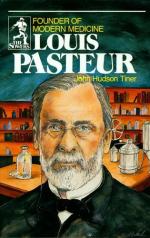|
This section contains 348 words (approx. 2 pages at 300 words per page) |
The Work of Louis Pasteur
Pasteur's first major accomplishment was formulating a fundamental law for molecular asymmetry: that asymmetric molecules are always the product of life forces. This eventually evolved into a new branch of science, called stereochemistry. When asked to examine why alcohol becomes contaminated during fermentation, Pasteur developed the germ theory, disproving the theory of spontaneous generation, and showing that living things can only come from other living things. This led to the study of germs and infections. Thanks to Pasteur, techniques were formulate to kill microbes and control contamination.
In 1864, Pasteur was asked to study alcohol again. This time, Napoleon III had requested him to study the diseases that contaminate wine. He discovered the process of pasteurization, or heating wine to kill microorganisms. Today, pasteurization is applied to beer and milk as well.
Soon after, Louis Pasteur began to investigate various infectious diseases afflicting animals. He examined silkworm diseases that were destroying France's silk industry. By doing this, he not only discovered how these infectious agents are treated and prevented, but also confirmed that each disease is caused by a specific microbe. He was then able to create basic rules of sterilization, forever revolutionizing surgery and obstetrics. Continuing his studies of diseases, Pasteur went on to create vaccines for chicken cholera, anthrax, swine erysipelas, and most importantly, rabies.
On March 1st, 1886, Louis Pasteur requested a rabies vaccine center at the Academy of Sciences. After much debate, the Pasteur Institute was finally created. He dedicated the last seven years of his life to the institute, and after his death in 1895, his work was continued throughout the world by his followers, the Pasteuriens. His many accomplishments have come to represent his persistent experimentation. After all, his philosophy was:
"Do not put forward anything that you cannot prove by experimentation."
|
This section contains 348 words (approx. 2 pages at 300 words per page) |


